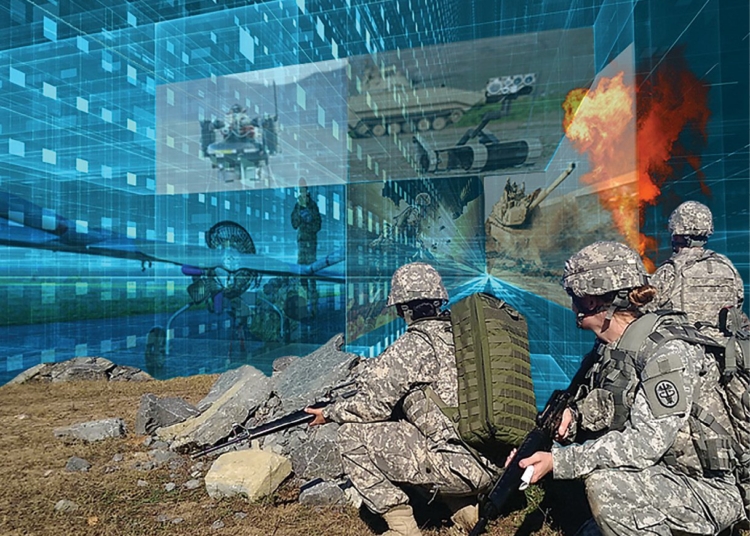This content explores the rise of virtual warfare in military simulations. It discusses the origins of military simulations, the advancements in computer-based simulations, and the introduction of virtual reality (VR) and augmented reality (AR) technologies. The article highlights the benefits of virtual warfare, such as safe and controlled training environments, repetitive training opportunities, and enhanced cooperation among military branches. It also addresses the challenges and limitations, including the cost and continuous updates required for simulation technologies. The content concludes by discussing the future of virtual warfare, including increased integration with artificial intelligence (AI) and the possibility of virtual simulations being used in actual combat operations.
From Battlefields to Algorithms: The Rise of Virtual Warfare in Military Simulations
Introduction
Over the years, warfare has evolved significantly, from primitive weapons to sophisticated technology. One of the key developments in recent times is the rise of virtual warfare in military simulations. Virtual warfare allows soldiers to train and strategize in a realistic, safe, and controlled environment. This article explores the growing prominence of virtual warfare and its impact on modern military training.
The Beginnings of Military Simulations
Military simulations have been utilized by armed forces for decades, primarily in the form of tabletop war games. These games allowed officers to develop strategies, test tactical maneuvers, and evaluate the consequences of different decisions. Such simulations were limited by the imagination of the participants and the static nature of the simulations.
The Emergence of Computer-Based Simulations
With the advent of computers, military simulations took a leap forward. The ability to simulate complex scenarios with realistic physics and dynamic environments revolutionized training. Computer-based simulations allowed soldiers to immerse themselves in virtual warzones and experience the chaos of battle without the risk of physical harm.
Virtual Reality (VR) and Augmented Reality (AR)
The introduction of virtual reality (VR) and augmented reality (AR) technologies brought military simulations to a whole new level of realism. VR headsets transport soldiers into a completely virtual environment, making every aspect of the battle come to life. Soldiers can interact with virtual surroundings, manipulate weapons, and communicate with teammates, creating an incredibly immersive experience. AR, on the other hand, overlays virtual elements onto the real world, enabling soldiers to practice their skills in real-life scenarios.
Benefits of Virtual Warfare
Virtual warfare offers numerous advantages for military training. Firstly, it provides a safe and controlled setting for soldiers to practice their tactics and decision-making skills. Mistakes made in virtual simulations do not have life-or-death consequences, allowing soldiers to learn from their errors and improve their strategies.
Secondly, virtual warfare allows for repetitive training and scenario replayability. Soldiers can repeat simulations multiple times, learning from each attempt and refining their approach. This iterative process can lead to more efficient and effective decision-making during actual combat situations.
Additionally, virtual warfare enables the integration of multiple military branches, fostering cooperation and coordination. Soldiers from different units can participate in joint exercises, preparing them for the realities of combined operations in the field.
Challenges and Limitations
While virtual warfare offers numerous benefits, it also presents challenges and limitations. One of the key challenges is the cost of acquiring and maintaining advanced simulation technologies. Developing realistic virtual environments and equipping soldiers with the necessary hardware can be a significant investment for armed forces.
Moreover, simulation systems must constantly evolve to keep up with advancements in technology and the changing nature of warfare. Continuous updates and upgrades are required to ensure the simulations remain relevant and effective in training soldiers for modern battlefields.
The Future of Virtual Warfare
The future of virtual warfare is promising. As technology continues to advance, so will the realism and capabilities of military simulations. We can expect increased integration with artificial intelligence (AI) algorithms, allowing for dynamic and intelligent adversaries in virtual environments.
Furthermore, virtual warfare may extend beyond training and become an integral part of actual combat operations. Remote-controlled drones and robotic soldiers could be deployed in battlefields, reducing the risk to human soldiers. These remotely operated systems would rely on advanced simulation technologies to provide real-time feedback and situational awareness.
Conclusion
From tabletop war games to cutting-edge virtual reality simulations, military training has undergone a remarkable transformation. Virtual warfare has emerged as a critical component of modern military training, offering a safe, realistic, and immersive environment for soldiers to hone their skills. While challenges and limitations persist, the benefits of virtual warfare far outweigh the costs, paving the way for a future where algorithms and virtual environments play a substantial role in both training and combat operations.













